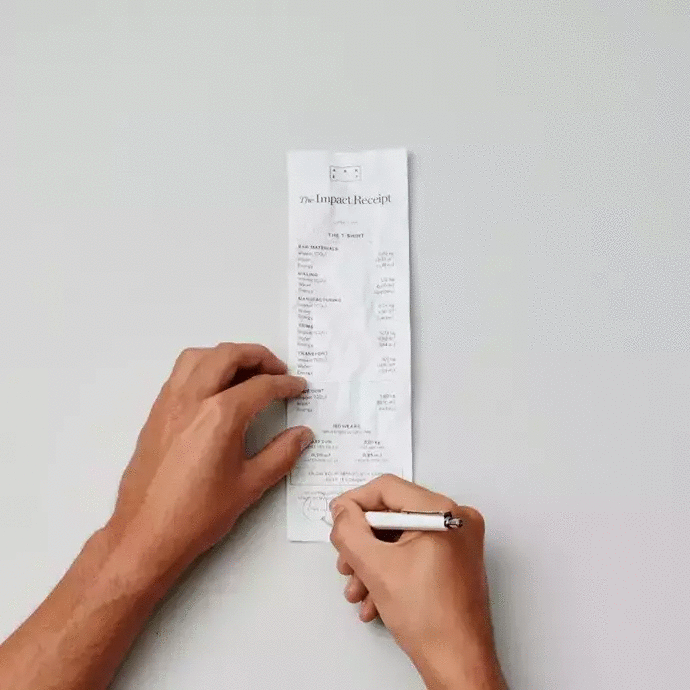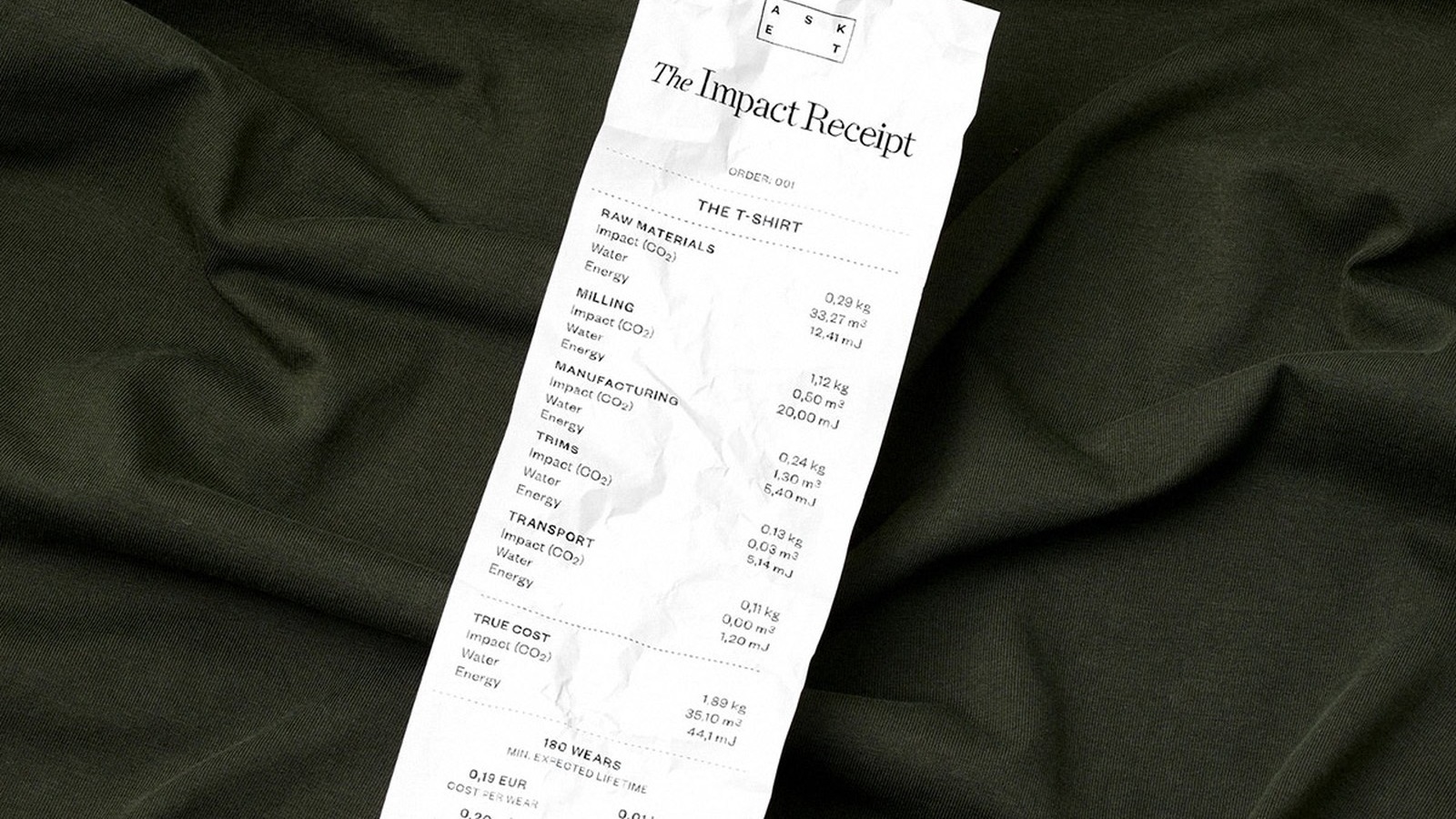Being in fashion and in style comes with a price. And we’re not referring to the price tag. The UN Conference on Trade and Development (UNCTAD), considers the fashion industry as the second-largest polluter in the world. One can see the impact this sector has in numbers: 2,000 gallons of water are needed to make one pair of jeans; 93 billion cubic meters of water is used by this industry every year — enough for five million people to survive; 20% of the global wastewater is produced by the fashion industry.
When one buys a new T-shirt, they most probably don’t know the cost the environment had to pay for the piece of garment to be created. Asket, a clothing brand in Stockholm that doesn’t design for seasons, they create for forever, embarked on a mission to let people know what the real cost behind a garment is. During this week’s #ThrowBrandThursday, we are introducing you to “The Impact Receipt,” a campaign that puts clothing’s creation impact on the environment on a cash receipt. Created together with Strays agency, the initiative asks consumers to be conscious of the consequences their purchase has and also empowers them to maximize the use of their clothes.

Clothing production doubled between 2000 and 2014. The pressure to keep buying clothes is big and even poses an obstacle to sustainability. British artist and environmental activist Elle L told UN News that “there’s a real pressure to buy, and there are no brake pads to slow overproduction and overconsumption.” Sure, we can buy our style yet we “can’t shop our way to sustainability.”
The Swedish company admits that while there are many great initiatives that address this problem, the fashion industry isn’t addressing overconsumption — the real cause of climate change, pollution, and workforce exploitation. This is where honesty steps in, the company adopting a fully transparent behavior regarding its garments’ production because people “deserve to know the true cost of the clothing [they] wear on [their] skin.”
The brand accepts the reality with which each piece of a garment comes. “We need to face the fact that we can’t shop our way to sustainability. If that were the case, we could have offset our way back to pre-industrial revolution climate and pollution levels years ago,” says Asket.

To understand the impact of its clothing, the company decided to keep track of the things that are being used to create its products. Thus, the receipt for the garments gives buyers insights into how much CO2 was emitted, how much water they required to make the clothes, and how much energy was consumed.
August Bard-Bringéus, Asket Co-Founder, said: “By launching ‘The Impact Receipt’ we want to show the true cost of a garment’s production and encourage not only ourselves but also our customers, and the industry as a whole, to think about the environmental debt we’re creating.”
Amongst the clothes that feature the full report (cost, traceability, and impact) are the Oxford Shirt, the Merino, Sweater, the Chino, and the T-Shirt. The latter is the brand’s most sold piece of clothing and has a CO2 impact lower than the average (2-2,5kg). The rest of the garments are labeled with traceability and cost breakdown but the brand works on a tool so that the entire permanent collection will showcase data about environmental impact.
Credits:
Client: Asket
Agency: Strays
